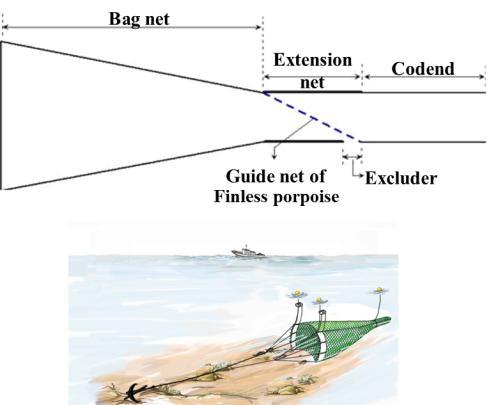
According to a study conducted by Dr. Park Gyeom-jun at the National Institute of Fisheries Science (NIFS), the number of porpoises declined from 36,000 in 2005 to 13,000 in 2011, and over 1,500 die from incidental catch ever year. (image: Wikimedia)
BUSAN, June 22 (Korea Bizwire) – The Indo-Pacific finless porpoise, or simply finless porpoise (Neophocaena phocaenoides), is one of seven porpoise species.
These porpoises are mainly found around the Korean Peninsula, especially in Korea’s West Sea, and because of their long-lasting relationship with the Korean people, they’re often referred to as ‘native dolphins’, or sometimes ‘smiling whales’ for their delightful appearance.
Sadly, however, their population is rapidly declining, largely from incidental catch.
According to a study conducted by Dr. Park Gyeom-jun at the National Institute of Fisheries Science (NIFS), the number of porpoises declined from 36,000 in 2005 to 13,000 in 2011, and over 1,500 die from incidental catch ever year.
In order to improve the situation, NIFS’s Whale Institute has developed a fishing net with a system that facilitates the escape of finless porpoises. The net was derived from an existing anti-jellyfish net.
The net is 90 meters long with an entrance that is 10 meters wide. It was designed so that bigger animals like large jellyfish and porpoises cannot enter the main net, and can slip out through an escape opening installed in the middle.

The net is 90 meters long with an entrance that is 10 meters wide. It was designed so that bigger animals like large jellyfish and porpoises cannot enter the main net, and can slip out through an escape opening installed in the middle.
Earlier in March, the institute supplied 12 of these nets to two local fishing boats in Seocheon County, South Chungcheong Province, and started experimenting with the upgraded nets. Each net was different from the others in terms of the location of the escape opening. The mesh of half of the nets was made much finer, while the other half was more loose, in order to investigate how the differences affected fishing operations.
The institute discovered, after three months, that no porpoise had been captured by the two ships running the new nets, while a total of 56 porpoises were killed during the same period from incidental catch by other fishing boats in the area.
“The new nets with the escape openings are definitely effective in preventing the incidental catch of finless porpoises,” said Dr. Park. “There’s an urgent need to develop a net that can protect these endangered animals while not affecting the amount of total catch.”
Fishermen are rumored to be concerned that the new nets may hamper their work and reduce their catch.
“For now, we have no reason to believe that the net reduces the volume of fish caught, but it’s definitely an area that needs further research and experimentation,” continued Dr. Park. “The reason why these porpoises enter the nets is unknown, but it is likely that they’re swept into the nets by the rough currents of the West Sea.”
By Joseph Shin (jss539@koreabizwire.com)






